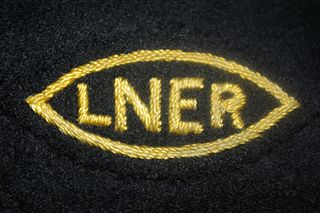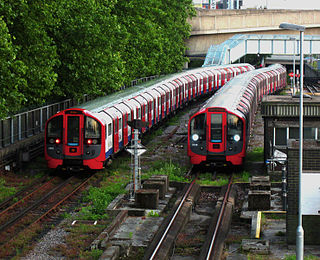
London Underground rolling stock includes the electric multiple units that run on the London Underground. The trains come in two sizes, smaller deep-tube trains and larger sub-surface trains that are of a similar size to those on British main lines. New trains are designed for the maximum number of standing passengers and for speed of access to the cars.
A number of different numbering and classification schemes have been used for carriages and wagons on Britain's railways, and this page explains the principal systems. Carriages and wagons have frequently had similar arrangements for classification and numbering, so are considered together. There are also links to other pages that deal in greater depth with the particulars of individual types.
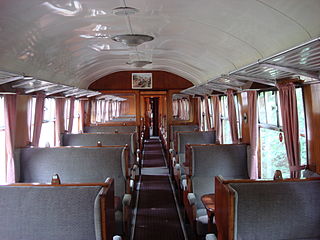
British Railways Mark 1 was the family designation for the first standardised designs of railway carriages built by British Railways (BR) from 1951 until 1974. Following nationalisation in 1948, BR had continued to build carriages to the designs of the "Big Four" companies, and the Mark 1 was intended to be the standard carriage design for use across all lines, incorporating the best features of each of the former companies' designs. It was also designed to be much stronger than previous designs, to provide better protection for passengers in the event of a collision or derailment.

The British Rail Mark 3 is a type of passenger carriage developed in response to growing competition from airlines and the car in the 1960s. A variant of the Mark 3 became the rolling stock for the High Speed Train (HST).
The Lancashire and Yorkshire Railway (LYR) built suburban electric stock for lines in Liverpool and Manchester. The line between Liverpool to Southport began using electric multiple units (EMUs) on 22 March 1904, using a third rail 625 V DC. Additional trains were later built for this route, and in 1913 incompatible stock for the route to Ormskirk. Lightweight units were built to run on the Liverpool Overhead Railway.
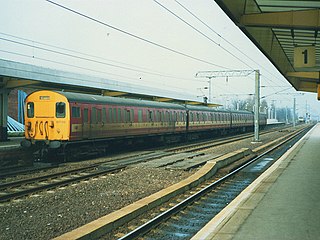
The British Rail Class 307 electric multiple units were built by BR at Eastleigh Works from 1954 to 1956. They were initially classified as AM7 before the introduction of TOPS.

The British Rail Class 306 was a type of electric multiple unit (EMU) introduced in 1949. It consisted of 92 three-car trains which were used on newly electrified suburban on the Great Eastern Main Line between Shenfield and London Liverpool Street.

The LNER electric units were electric multiple units that ran on the Tyneside Electrics, a suburban system based on the English city of Newcastle upon Tyne. In 1937 the London and North Eastern Railway (LNER) received articulated twin passenger electric units to replace the NER electric units that had been built in 1904–15 by the North Eastern Railway. The order including some single-unit motor parcel vans and motor luggage vans. In the 1960s declining passenger numbers and the high cost of renewing life-expired electric substation equipment across the system led to the replacement of the electric multiple units with diesel multiple units and the units were all withdrawn in 1967.
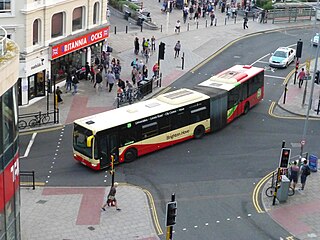
An articulated vehicle is a vehicle which has a permanent or semi-permanent pivot joint in its construction, allowing the vehicle to turn more sharply. There are many kinds of articulated vehicles, from heavy equipment to buses, trams and trains. Steam locomotives were sometimes articulated in that the driving wheels could pivot around.

British Rail Universal Trolley Equipment (BRUTEs) were trolleys used from 1964 until 1999 for sorting, handling and transport by rail of parcels, newspapers, etc.
The London and North Eastern Railway (LNER) inherited several styles of coaching stock from its constituents. Sir Nigel Gresley continued the styles that he had established pre-grouping at the Great Northern Railway (GNR) and for the East Coast Joint Stock.

The passenger coaches of the Great Western Railway (GWR) were many and varied, ranging from four and six-wheeled vehicles for the original broad gauge line of 1838, through to bogie coaches up to 70 feet (21 m) long which were in service through to 1947. Vacuum brakes, bogies and through-corridors all came into use during the nineteenth century, and in 1900 the first electrically lit coaches were put into service. The 1920s saw some vehicles fitted with automatic couplings and steel bodies.

Hurst, Nelson and Company Ltd was a railway rolling stock manufacturer based in Motherwell, Scotland. The company also built many railway wagons, as well as trams and trolleybus carosseries for several local authorities.

Diesel multiple units and railcars are trains, usually with passenger accommodation, that do not require a locomotive. Railcars can be single cars, while in multiple units cars are marshalled together with a driving position either end. As of December 2010, 23 percent of the rail passenger cars used on Network Rail are part of an diesel multiple unit.

A steam railcar is a rail vehicle that does not require a locomotive as it contains its own steam engine. The first steam railcar was an experimental unit designed and built in 1847 by James Samuel and William Bridges Adams. In 1848 they made the Fairfield steam carriage that they sold to the Bristol & Exeter Railway, who used it for two years on a branch line.
The RUB type carriage stock was a type of steel bodied air conditioned passenger carriage operated by the New South Wales Government Railways from September 1949 until April 2000.

The NER electric units were electric multiple units that ran on the Tyneside Electrics, a suburban system based on the English city of Newcastle upon Tyne. In 1904 the North Eastern Railway electrified suburban services on Tyneside with a third rail at 600 V DC and built saloon cars that ran in 3-car to 8-car formations. More cars were built between 1908 and 1915 to cope with increased traffic. In 1918 a fire at Walkergate car shed destroyed 34 cars and replacement cars were built in 1920.
The New South Wales stainless steel carriage stock was a type of passenger carriage operated by the New South Wales Government Railways from 1961 until 1993.

The London Underground opened in 1863 with gas-lit wooden carriages hauled by steam locomotives. The Metropolitan and District railways both used carriages exclusively until they electrified in the early 20th century. The District railway replaced all its carriages for electric multiple units, whereas the Metropolitan still used carriages on the outer suburban routes where an electric locomotive at the Baker Street end was exchanged for a steam locomotive en route.

Tver Carriage Works is a rolling stock manufacturer located in Tver, Russia. The company is part of Transmashholding.



